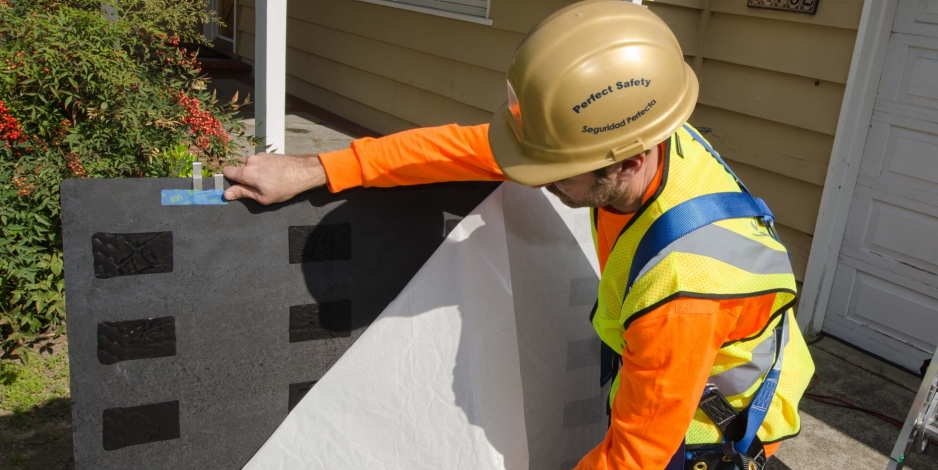
One of the first questions asked about the Lumeta Lynx product is about how it is attached to the roof. For solar professionals used to locating rafters, drilling holes, and using screws, sealant and flashing to attach racking, using adhesive seems foreign; but for anyone with a roofing background, the simplicity of adhesive is a no-brainer. Moving from racking to adhesion is like the move from braces to Invisalign to straighten teeth: the result is the same, but the process is faster, less intrusive, and significantly less visible. Three attributes make thermoplastic butyl adhesive the best choice for our innovative architecture: it never cures, acts as a sealant, and lasts for decades.
The first attribute of thermoplastic butyl adhesive that makes it attractive for attaching solar is that it never cures. Because the butyl adhesive never fully cures, heating the butyl to the right temperature will soften the butyl and enable the module to be removed years or decades after its initial installation without damaging either the module or the roofing system. This differs from an adhesive that cures—goes through a process that changes its chemical properties—and a module attached with a curing adhesive would not be able to be removed without damaging either the module or the surface it is attached to.
Butyl adhesive is somewhat misnamed as it is not only an adhesive, but also acts as a sealant when needed. This second attribute comes into play in the Lumeta Lynx 72, which is applied on flat or low slope roofs. The last thing you want on a flat roof is moisture and organic materials getting underneath the module. Anyone who has seen past flat roof systems that accumulated dirt and seeds underneath and ended up with small forests dislodging the modules knows the importance of keeping soiling from getting under the modules. The Lumeta Lynx 72 uses butyl adhesive in a window pane pattern—a line around all four edges and a line running down the middle—and leverages the sealant properties of butyl to ensure that water and organic materials are prevented from getting beneath the module.
The third attribute of the butyl adhesive that made it a great choice for our product is the longevity of the product. For decades, the roofing industry has used butyl adhesives for roofing systems designed to last 20, 30 years or more.
In November, we’ll be running a webinar looking more deeply at the attributes of our adhesive and our wire management system. Register now to learn more.
